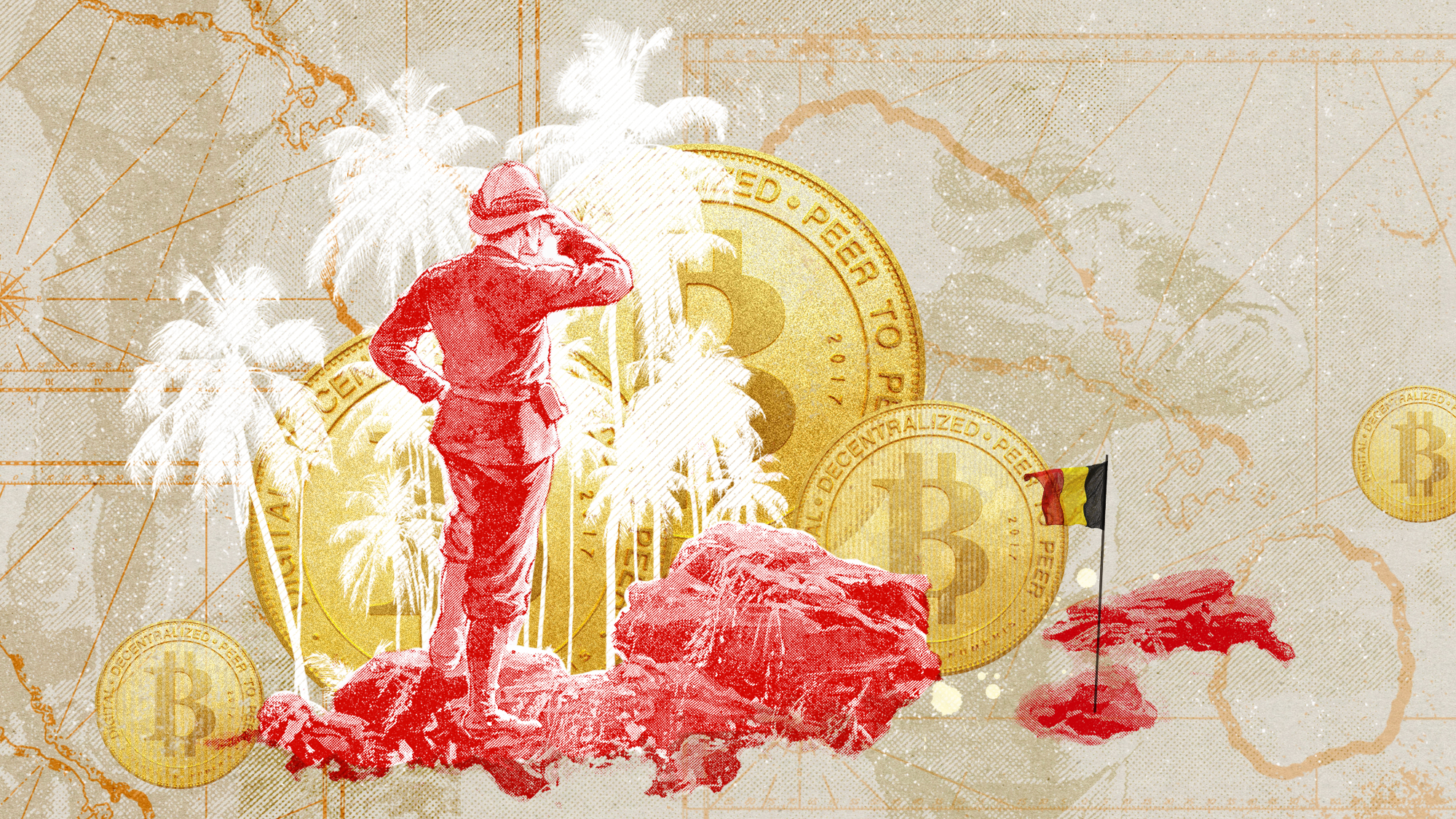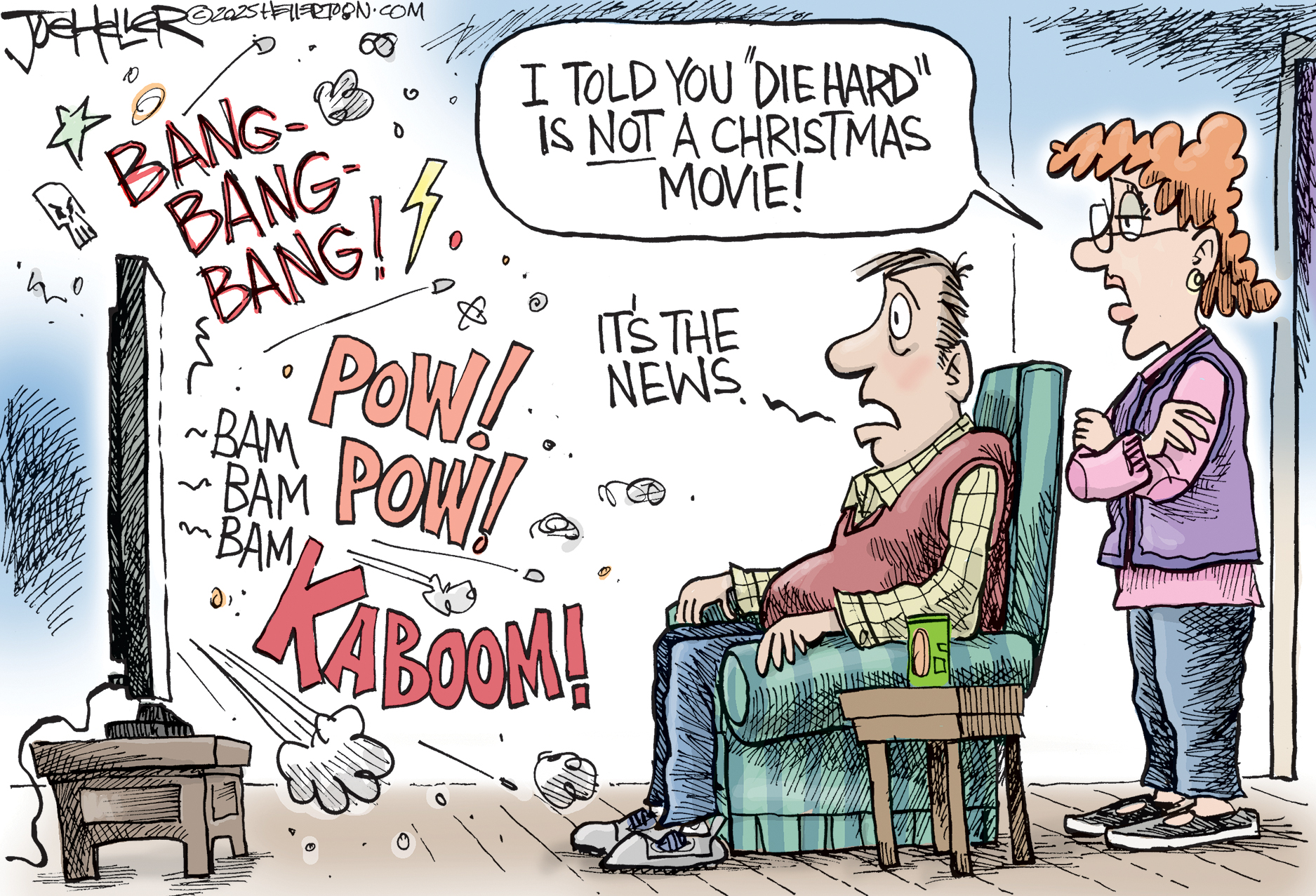America's department stores are in deep, deep trouble
The retail apocalypse has only just begun


Last year was heralded by many analysts as the "retail apocalypse." The term is a bit of a misnomer, since the overall industry is doing okay. But things were really bad for department store chains, which have lost 500,000 jobs since 2001. In 2017 alone, a whole swath of chains including Payless and Toys "R" Us filed for bankruptcy, while major department retailers like Sears, J.C. Penney, and Macy's shuttered around 9,000 stores.
It looks like 2018 could be even worse.
"The number of store closings in the U.S. is expected to jump at least 33 percent to more than 12,000 in 2018, and another 25 major retailers could file for bankruptcy," Business Insider reports, working off an analysis by commercial real-estate firm Cushman & Wakefield.
The Week
Escape your echo chamber. Get the facts behind the news, plus analysis from multiple perspectives.

Sign up for The Week's Free Newsletters
From our morning news briefing to a weekly Good News Newsletter, get the best of The Week delivered directly to your inbox.
From our morning news briefing to a weekly Good News Newsletter, get the best of The Week delivered directly to your inbox.
Not surprisingly, the biggest losses will be among the chains that have already declared bankruptcy, like Payless and Toys "R" Us, Business Insider found. Walgreens and Gap will also see big losses. The larger department chains like J. Crew and Macy's will likely face far fewer closings. But they'll still have an impact, and Sears and Kmart aim to close a combined 63 stores in January.
For modest-sized towns in the gray area between suburbs and rural communities, the retail sector can be one of the biggest employers. The loss of even one big department store can set off a chain reaction that guts the entire town. As Business Insider noted, income lost from a big closing puts the mall in a more precarious financial position, which in turn can give smaller stores the legal opportunity to break their leases early and flee. That can have devastating economic ripple effects for incomes, employment, livelihoods, and families throughout an entire town.
So what's going on?
The big story usually cited here is the arrival of online retail, embodied by the behemoth that is Amazon. No doubt, that's a big factor. But it's far from the only one.
A free daily email with the biggest news stories of the day – and the best features from TheWeek.com
The geography of the U.S. economy has shifted markedly in recent decades. Back in the early 1990s, employment and new business creation actually recovered fastest from a recession in counties with the lowest population density. But ever since, those rates have been falling. Following the 2008 collapse, the business creation rate was actually negative in the most sparsely populated counties, while job creation rate was the slowest.
Rising inequality also had a big impact on customer bases. In 1992, the top 5 percent of earners accounted for 27 percent of all consumer spending. By 2012, their chunk of all spending had risen to 38 percent. The demand coming from the bottom 80 percent of Americans on the income ladder fell over the same period, from 46.6 percent to 39 percent.
Big department retailers outside of major metropolitan areas rely on middle-class customers who live in rural areas — and those sorts of customers are simply a lot harder to find in modern America.
That's not all that's going on, either.
Some of the big shareholders in the major department store chains are Wall Street hedge funds. As David Dayen has chronicled, these firms forced many of the chains to load up on unsustainable levels of debt to finance big shareholder payouts.
Sears, for instance, was merged with Kmart in 2005, then forced to spit out $6 billion to shareholders through stock buybacks, while at the same time borrowing billions from some of those same shareholders. The two companies' real estate was also split up in a way that forced them to pay rent to stay in properties they used to own. The result has left Sears staring down store closures, job losses, and likely bankruptcy.
Golden Gate Capital and Blum Capital sucked $700 million out of Payless between 2012 and 2013. Then Payless filed for bankruptcy last year. Toys "R" Us sent $2 billion to Kohlberg Kravis Roberts and Bain Capital, all while building up $5.2 billion in debt and as much as $500 million in annual interest payments. The toy store chain was actually seeing profits rise even as its finances forced it into bankruptcy.
Basically, the companies were cannibalized by Wall Street for cash. Forced to take on huge debt burdens to finance payouts to shareholder, they had to shut down stores and lay off workers to balance the books. This is actually a practice that's become common across the American economy, and it helps explain why business investment has fallen even as corporate profit margins after tax have soared. But the hedge funds that own many of the big department chains seemed to have pursued the strategy with a particularly demented aggression.
In fact, shareholders' habit of liquidating companies to line their pockets is a big factor driving U.S. inequality, and thus driving the disappearance of the retail sector's consumer base.
Caught in that negative feedback loop, major chains are facing collapse. Lenders have soured on giving further aid to retailers, given their debt burdens. And the Federal Reserve's decision to start hiking interest rates over the last two years only added to their debt burdens, further speeding along their reckoning.
Right now, Moody's only rates two of the eight publicly traded department stores as distressed. But that could change fast. Only $100 million in debt came due for the retail sector in 2017. In 2018, $1.9 billion is coming due, then $5 billion on average from 2019 to 2025.
Things will probably get a lot worse before they get better.
Jeff Spross was the economics and business correspondent at TheWeek.com. He was previously a reporter at ThinkProgress.
-
 Critics’ choice: The year’s top 10 movies
Critics’ choice: The year’s top 10 moviesFeature ‘One Battle After Another’ and ‘It Was Just an Accident’ stand out
-
 The small Caribbean island courting crypto billions
The small Caribbean island courting crypto billionsUnder the Radar Crypto mogul Olivier Janssens plans to create a libertarian utopia on Nevis
-
 Political cartoons for December 21
Political cartoons for December 21Cartoons Sunday’s political cartoons include Christmas movies, AI sermons, and more
-
 The pros and cons of noncompete agreements
The pros and cons of noncompete agreementsThe Explainer The FTC wants to ban companies from binding their employees with noncompete agreements. Who would this benefit, and who would it hurt?
-
 What experts are saying about the economy's surprise contraction
What experts are saying about the economy's surprise contractionThe Explainer The sharpest opinions on the debate from around the web
-
 The death of cities was greatly exaggerated
The death of cities was greatly exaggeratedThe Explainer Why the pandemic predictions about urban flight were wrong
-
 The housing crisis is here
The housing crisis is hereThe Explainer As the pandemic takes its toll, renters face eviction even as buyers are bidding higher
-
 How to be an ally to marginalized coworkers
How to be an ally to marginalized coworkersThe Explainer Show up for your colleagues by showing that you see them and their struggles
-
 What the stock market knows
What the stock market knowsThe Explainer Publicly traded companies are going to wallop small businesses
-
 Can the government save small businesses?
Can the government save small businesses?The Explainer Many are fighting for a fair share of the coronavirus rescue package
-
 How the oil crash could turn into a much bigger economic shock
How the oil crash could turn into a much bigger economic shockThe Explainer This could be a huge problem for the entire economy
